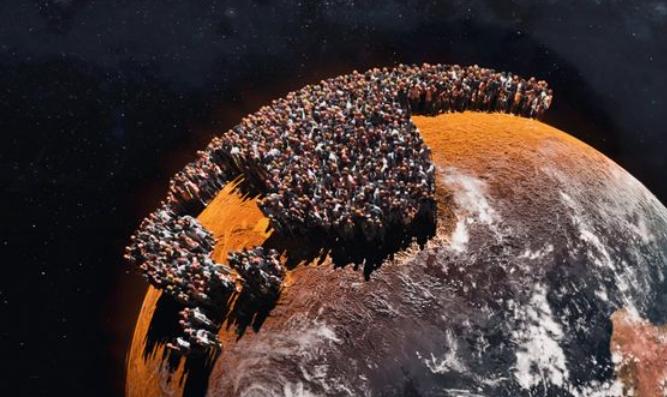Statistically, as of today, eight billion people live in the world. An end to population growth is not in sight. What does this mean for climate protection?
Eight billion – so many people have never lived on our planet before. So what does climate protection have to look like that keeps our ecological footprint as small as possible? Many questions arise from this situation.
Why are there three times as many people today as there were in 1950?
The UN attributes this growth to improvements in health care, nutrition, personal hygiene and advances in medicine. However, population growth also poses enormous challenges for the poorest countries, which have particularly high birth rates.
Where is the population growing the most?
Population growth is unevenly distributed around the world: In Europe and Japan, the population is shrinking. At the same time, it grows in India and Africa. According to the UN, more than half of the population growth by 2050 will be in the eight countries of India, Nigeria, Egypt, the Democratic Republic of the Congo, Ethiopia, Pakistan, the Philippines and Tanzania.
According to UN forecasts, the two most populous countries in the world, China and India, will probably swap places on the podium as early as next year. India’s total population will grow to around 1.4 billion by 2023 and to 1.7 billion by 2050. The Chinese population, on the other hand, is forecast to drop to 1.3 billion by 2050.
How is the world population evolving?
The trend is still increasing for the time being, even if the population growth has slowed down. It is currently less than one percent per year. Taking into account increasing life expectancy and the number of women of childbearing age, the UN predicts growth to 8.5 billion in 2030, 9.7 billion in 2050 and a peak of around 10.4 billion around 2080.
Professor Ottmar Edenhofer from the Potsdam Institute for Climate Impact Research told ZDF on Tuesday that population growth is declining “because in many parts of the world women are more educated because they are much more active in family planning”. Equality and access to education are the most important ways to limit population growth.
Can the climate handle such a large population?
Theoretically yes, experts say. However, only if the industrialized countries reduce their climate-damaging consumption. “Almost half of global CO2 emissions are caused by the ten percent of the world’s population with the highest income, while the contribution of the poorest half is negligible,” said the Federal Institute for Population Research.
While the US emits 14 tons of CO2 equivalent per capita, the EU has 7.2 and India has around 2.4 tons per capita. The example of China shows that a growing economy and thus increasing consumption leads to more environmental destruction. In addition, many poorer countries that hardly contribute to climate change suffer the most from the consequences.
What should I do?
“We can run our economy with other technologies,” says Edenhofer from the Potsdam Institute for Climate Impact Research. He relies on renewable energies and the more efficient use of raw materials. “We can do circular economy.” All of this is much more important than looking at population growth.
For example, a worldwide phase-out of coal is indispensable. The industrialized countries would have to support the poorer countries financially. Such an exit would keep the door open to meeting the 1.5 degree target. “If we don’t succeed, then this door will be irrevocably slammed shut.”
Frank Swiaczny from the Federal Institute for Population Research also sees the task in reconciling the growth of the world population with sustainable development: “More people do not necessarily mean a larger ecological footprint.”

